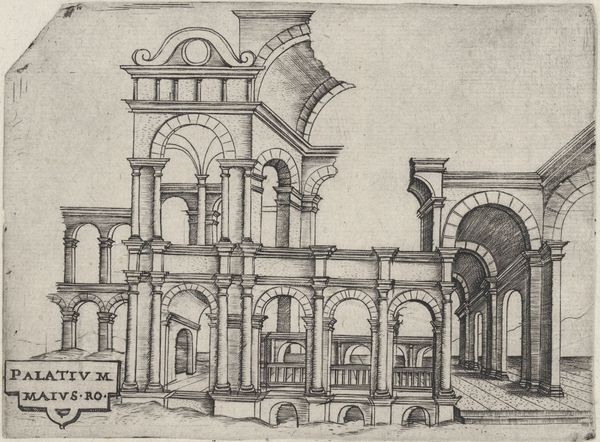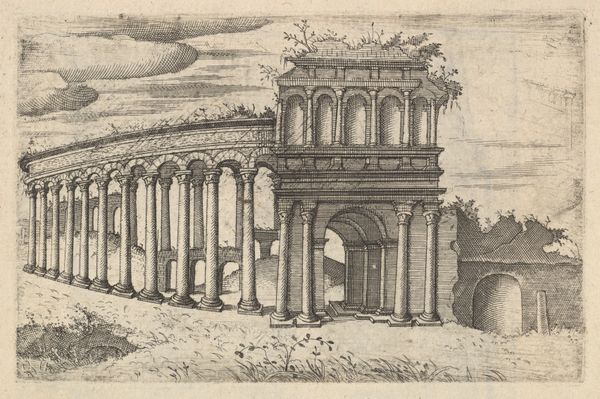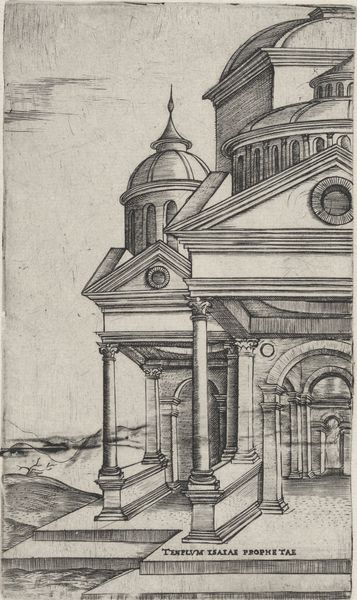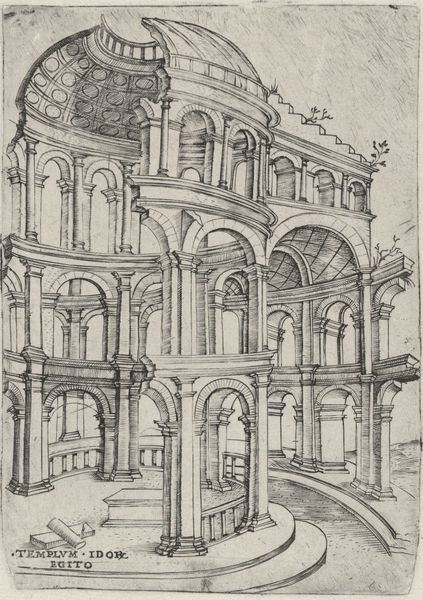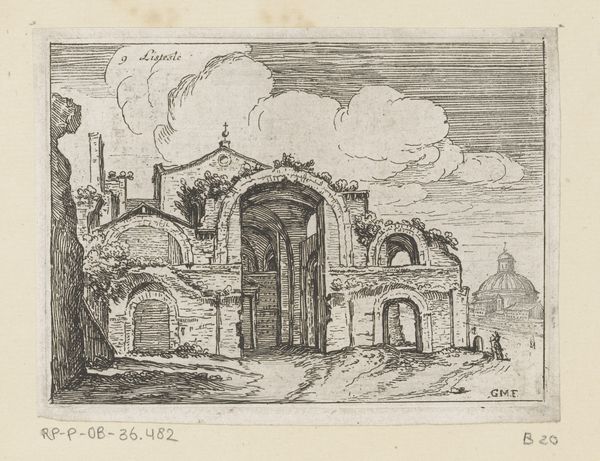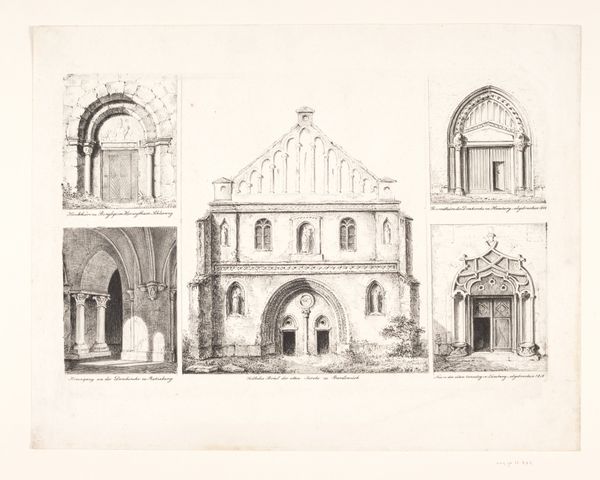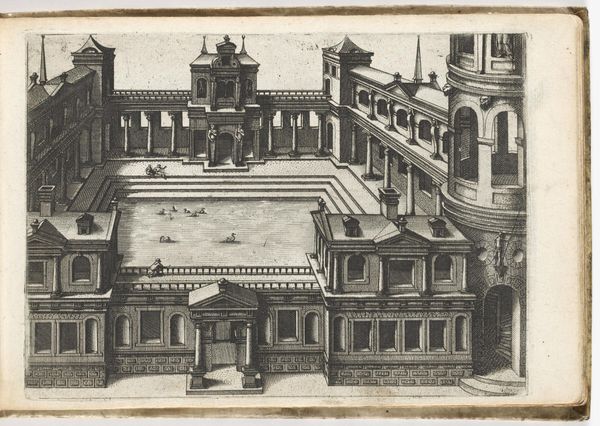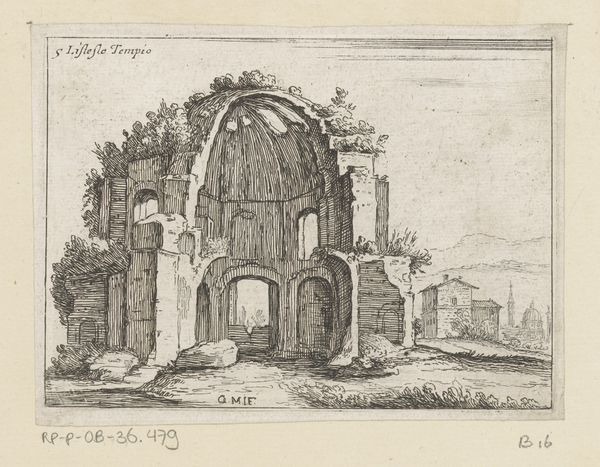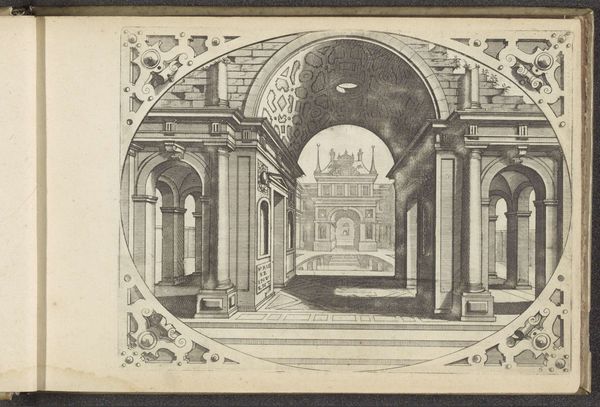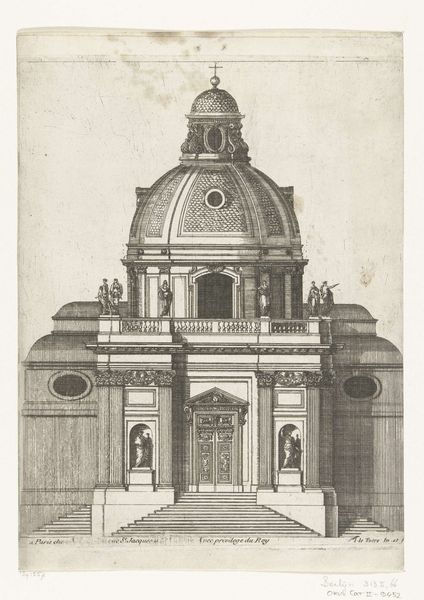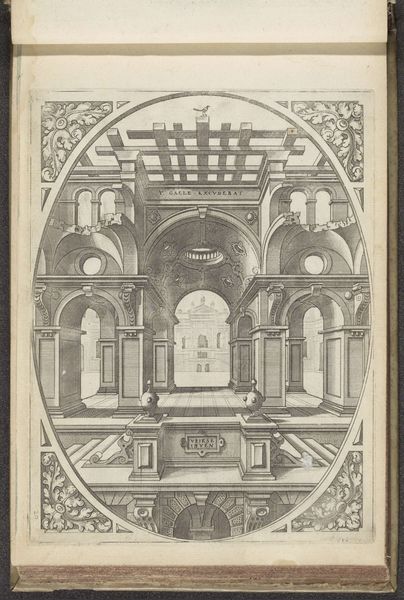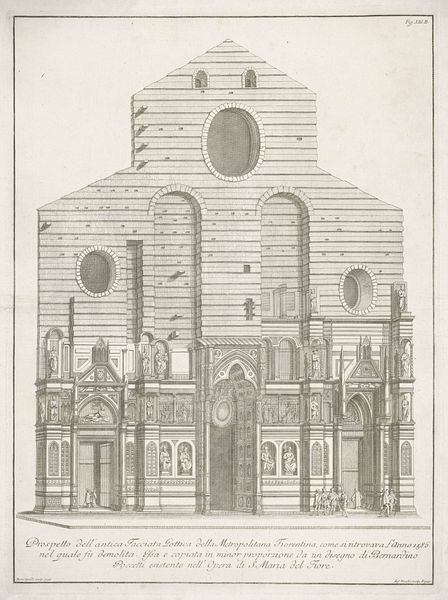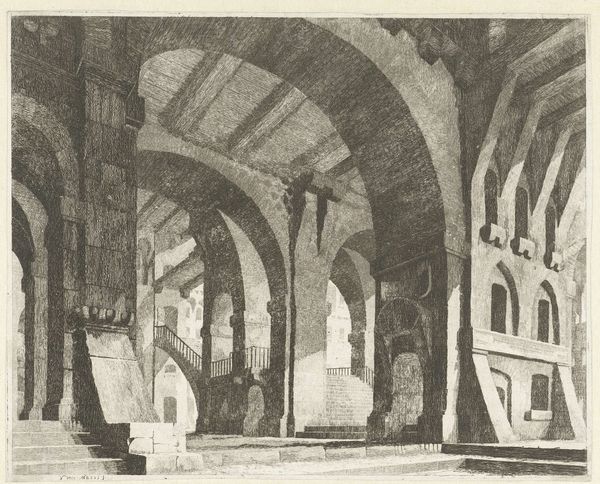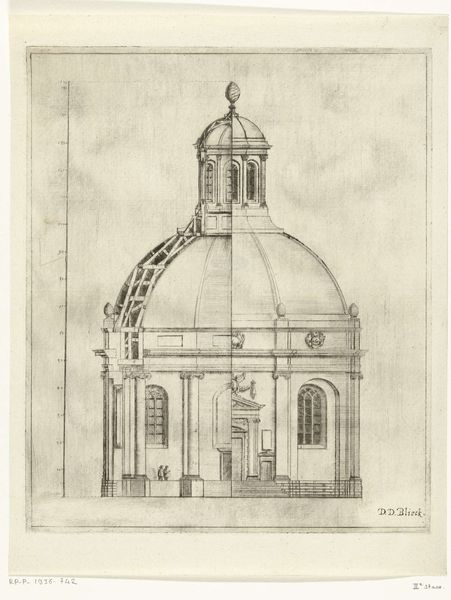
print, engraving, architecture
# print
#
landscape
#
11_renaissance
#
geometric
#
history-painting
#
italian-renaissance
#
engraving
#
architecture
Dimensions: height 111 mm, width 162 mm
Copyright: Rijks Museum: Open Domain
Curator: Looking at this print, made sometime between 1500 and 1549, we see what's titled "Vervallen klassieke tempel" – or "Dilapidated Classical Temple." It's an engraving depicting, as the title suggests, a ruined classical architectural structure. Editor: The immediate impression is one of melancholy. It's incredibly detailed, the engraver has captured the crumbling nature of the building perfectly. The light and shadow emphasize the decline, the decay is almost palpable. Curator: Exactly. Prints like these circulated widely and played a vital role in the Renaissance. They allowed for the dissemination of architectural ideas, influencing building projects and artistic visions across Europe. They were visual documents of antiquity, but also became statements on cultural ambition and the transience of power. Editor: The ruins, so precisely rendered, are fascinating. See how nature reclaims the stones, little sprigs of greenery poking from the archways? The classical motif suggests aspirations, yes, but it's immediately tempered by the presence of entropy, something fleeting. Do you think that contributes to how it resonates today? Curator: I would argue that the print's power comes from its layered commentary on history and the way societies engage with it. This was produced during a period deeply invested in reviving classical ideals. Yet, even amidst that revival, there's an acknowledgement of the cyclical nature of civilizations, and that great structures, and indeed great societies, will eventually crumble. This piece presents both inspiration and a cautionary tale. Editor: There’s a lonely, forlorn feeling about the work, I think also in the lines employed, a sort of etching for eternity or remembering times past... that really gets through to the viewer. It is as relevant to ideas today, the human desire to reach to ideals, that get swept away and become history. Curator: In the end, "Dilapidated Classical Temple" presents not just an image of physical decay, but also reflects on cultural memory, the use and interpretation of the past, and its impact on present aspirations. It brings light into how political and cultural entities project an idea to society for them to engage, which can become a new cultural norm or behaviour. Editor: Agreed. The artwork reminds us to find the beauty in that cyclical narrative, even within the ruins. The print really does hold a lot in its symbolism.
Comments
No comments
Be the first to comment and join the conversation on the ultimate creative platform.
